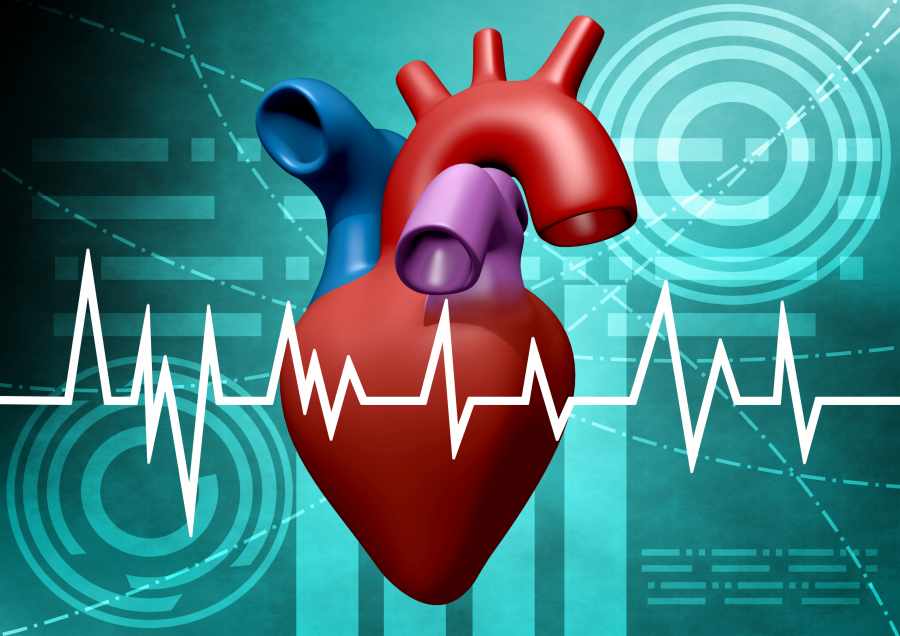
How To Take Care Of Cardiovascular Patients?
30-08-2017 | Posted By: Rajni Joshi | 2125 View(s)
Taking good care of Cardiovascular Patients or the person suffering from Heart-Related issues is important to make him/her recover sooner. Here are some of the modifications you can make for the cardiovascular patients. Before discussing all these modifications, let us just discuss, what are these cardiovascular diseases? CVD involves all the issues or diseases of the heart and circulation including coronary heart disease, heart attack, angina, congenital heart disease and stroke.
Risk Factors:
When talking about the risk factors, there are lipid risk factors and non-lipid risk factors, let us discuss them separately for better understanding.
Lipid Risk Factors:
LDL cholesterol – greater than 130 mg/dl.
HDL cholesterol – less than 40 mg/dl.
Total cholesterol – greater than 200 mg/dl.
Triglycerides – greater than 150 mg/dl.
Non Lipid Risk Factors:
Non-Lipid Risk factors are of two types:- modifiable (factors that can be modified) and non-modifiable (factors that can not be modified). Let’s begin with the modifiable Non-Lipid Risk Factors first:

Modifiable Non-Lipid Risk Factors Include
Cigarette Smoking
Physical Inactivity
Obesity
Diabetes
Hypertension
Atherogenic Diet Formation ( Diet rich in cholesterol and saturated fats)
These are the Non-lipid factors which can be modified.
Non-Modifiable Non-Lipid Risk Factors
Age
Gender
Hereditary
Family history of premature CVD (cardiovascular disease)
These are the Non-Lipid factors which can not be modified.
Here are some of the modifications you can make for the cardiovascular patient along with the treatment.
Dietary Modifications to take Care Of Cardiovascular Patients :
1. Energy
Give the patient a low-calorie diet and reduce it up to 800-1000 k cal/day from the daily diet as obesity increases the risk of heart diseases and it is also one of the leading causes of cardiovascular diseases. Make sure the patient spends around 30-45 minutes in some physical activity. The patient should perform some moderate-intensity exercise three to four times a week. Physical inactivity is highly associated with heart-related problems, and this is why you should avoid physical inactivity as much as possible.

2. Fat
An average person should consume 20-30 % of energy from fat, and thus, the person suffering from cardiovascular diseases should consume 20 % fat. Fat? Isn’t it just bad for us? Should a patient even consume it? These might be some questions in your mind, but let us tell you that there are good and bad fats! Confused? Let us discuss them!
Types Of Fat:
SFA (Saturated Fatty Acids)
UFA (Unsaturated Fatty Acids): MUFA (monounsaturated
fats) & PUFA (polyunsaturated fats)
Trans Fatty Acids
What is this Good and Bad fat?
Fat? Can it be good for us? Don’t they make us fat? It’s a myth that fat makes you fat! There are healthy fats also. We can understand how confused are you right now! But don’t worry, you’ll get all your questions answered Just read on.
Saturated fats or SFA :
Saturated fats are bad fats, and we should consume them in less amount. It increases LDL cholesterol and total cholesterol.
How much should you consume it?
Well, ideally you should consume less than 10 % of this fat to stay healthy and fit.
Example- Butter, Ghee, Lard, Vanaspati etc. These are the classic examples of saturated fats, and you should consume them in a limit or as we said less than 10 % of the total fat consumption.
Unsaturated Fats or UFA :
Unsaturated fats are healthy fats or are beneficial for us. Unsaturated fats are of two types:- MUFA or monounsaturated fats and PUFA or polyunsaturated fats.
MUFA: You can call them your best friends as they are so beneficial for you! How? It is because they decrease the bad cholesterol, i.e., Low-Density lipoprotein cholesterol and total cholesterol. Not only this, but they also help increase the good cholesterol. Remember? It’s HDL or high-density lipoprotein cholesterol. If confused about what is this good or bad cholesterol, do not forget to read our detailed article on How to increase your good cholesterol!
How much should you consume it?
You should consume more of this fat only; you can consume around 10-15 % MUFA daily of the total fat consumption. But remember we can’t have too much of any good thing, right? Anything in excess can affect your health. So, think twice before you add any extra snack in your plate!
Example- some classic examples of MUFA include Olive oil, mustard oil, canola oil.
PUFA: Another type of unsaturated fat, PUFA is also beneficial for us as it also decreases the bad cholesterol, I.e., low-density lipoprotein cholesterol and total cholesterol but the only drawback is, it also reduces the good cholesterol! So, you can consume it more than you consume saturated fats but choose MUFA over PUFA.
How much should you consume it?
Always remember, choose MUFA over PUFA, but choose PUFA over any other fats. You can consume up to 10 % of total fat from PUFA.
Example- Soybean, safflower oil, sesame oil are some of the good examples.
Trans fats:
Trans fats are your biggest enemies! Stay away from them! Why? Here’s the answer, because, they increase your low-intensity lipoprotein (bad cholesterol) or LDL, Total cholesterol and triglycerides. See how harmful is it! But wait! We have not finished yet! Trans fats can also reduce the HDL or the good cholesterol in your body. So, try to stay away from it!
How much should you consume?
You should not consume it more than 1 % in the total fat consumption as they are just bad for your health!
Examples- All cream filled processed food items, vanaspati etc.
So, leave that habit of grabbing a cream filled biscuit every time you feel like eating something. Eat an apple instead!

Cholesterol :
As we are talking about the cardiovascular patient, you should limit the daily cholesterol intake to no more than 200 mg a day. However, if you are healthy, you can consume 300mg of it per day but not more than that, try to have it even in less amount. Examples – it comes from two sources Your body is the first, specifically your liver that makes all the cholesterol you need. The remaining you get from foods from animals like poultry, meat and full-fat dairy products.
So, this is all about fat consumption. Remember, not all fats are bad for health if consumed in a limit or as per recommendation. Ideally, 20 % of the energy should come from fat, and thus you should at least consume 20 % of fat to stay healthy and fit.
3. Carbohydrates
For an average adult, 50-60 % of energy should come from carbohydrates. Most calories should come from carbohydrates but make sure you don’t have them in excess. What happens when you eat them more than required? Well, When you consume them in excess, the glucose gets converted into glycogen and then to triglycerides, which are harmful to our health. As we are talking about cardiovascular patients here, 55% of total calories should come from carbohydrates.
Carbohydrates are of two types, i.e., simple carbohydrates, and complex carbohydrates. Simple carbohydrates are composed of basic sugars which are easy to digest and can be a major source of energy. Few of these sugars are naturally occurring, in milk and fruits, while refined or processed sugars are often added to baked sodas, soda, and candies.
Coming to complex carbohydrates, these are found in legumes, whole grains, and starchy vegetables, contain longer chains of sugar molecules; all these usually take more time for the body to break down and use. What happens then? It provides you with a more even amount of energy. Try to consume more of complex carbohydrates like whole grains, whole pulses, and oats.
4. Protein
15 % of total energy should come from protein for cardiovascular patients. We are reducing the consumption of fats and carbohydrates so; we can increase the amount of protein for the patient. You can increase the use of soybean and consumption low-fat animal sources should be encouraged.
Apart from these, you can add antioxidants to the diet of the patient. Vitamins A, C, and E should find a place in the diet of the patient.
Lifestyle Modifications
As we mentioned smoking as a major risk factor for these diseases, we’d recommend avoiding smoking! Try to avoid tobacco consumption and drinking. Dietary fibres should also be encouraged in the diet.
So, these are some of the LifeStyle modifications that can be done to take Care Of Cardiovascular Patients. You’ll be surprised to know that you can prevent heart disease if you exercise regularly and indulge in some physical activity every day. Avoid consuming trans fats and limit the consumption of saturated fats. Choose MUFA over any other fats as they do not only increase the HDL but also decrease the bad cholesterol, I.e., LDL and total cholesterol. Consume more of complex carbohydrates like whole grains, whole pulses, and oats. You may start your day with a bowl of oats, have pulses for lunch and a whole-grain meal at dinner.
So, get set to make these changes in your diet and lifestyle to prevent cardiovascular disease and make it a point to get a Health Checkup done at regular intervals to ensure proper monitoring and follow up with a Doctor for Best Results.


